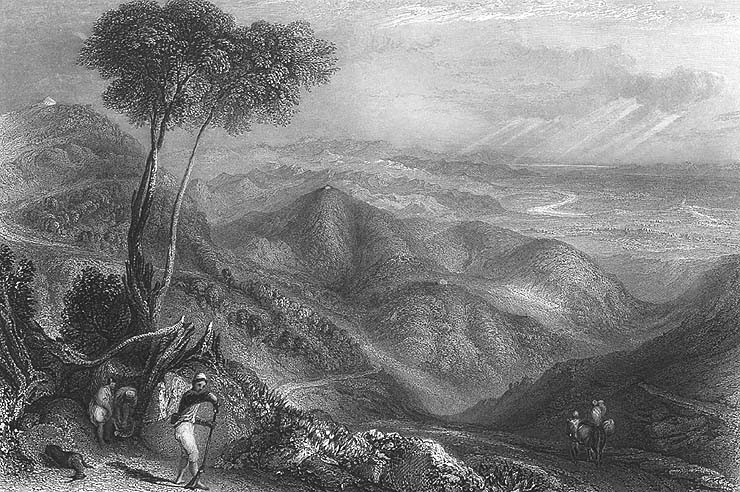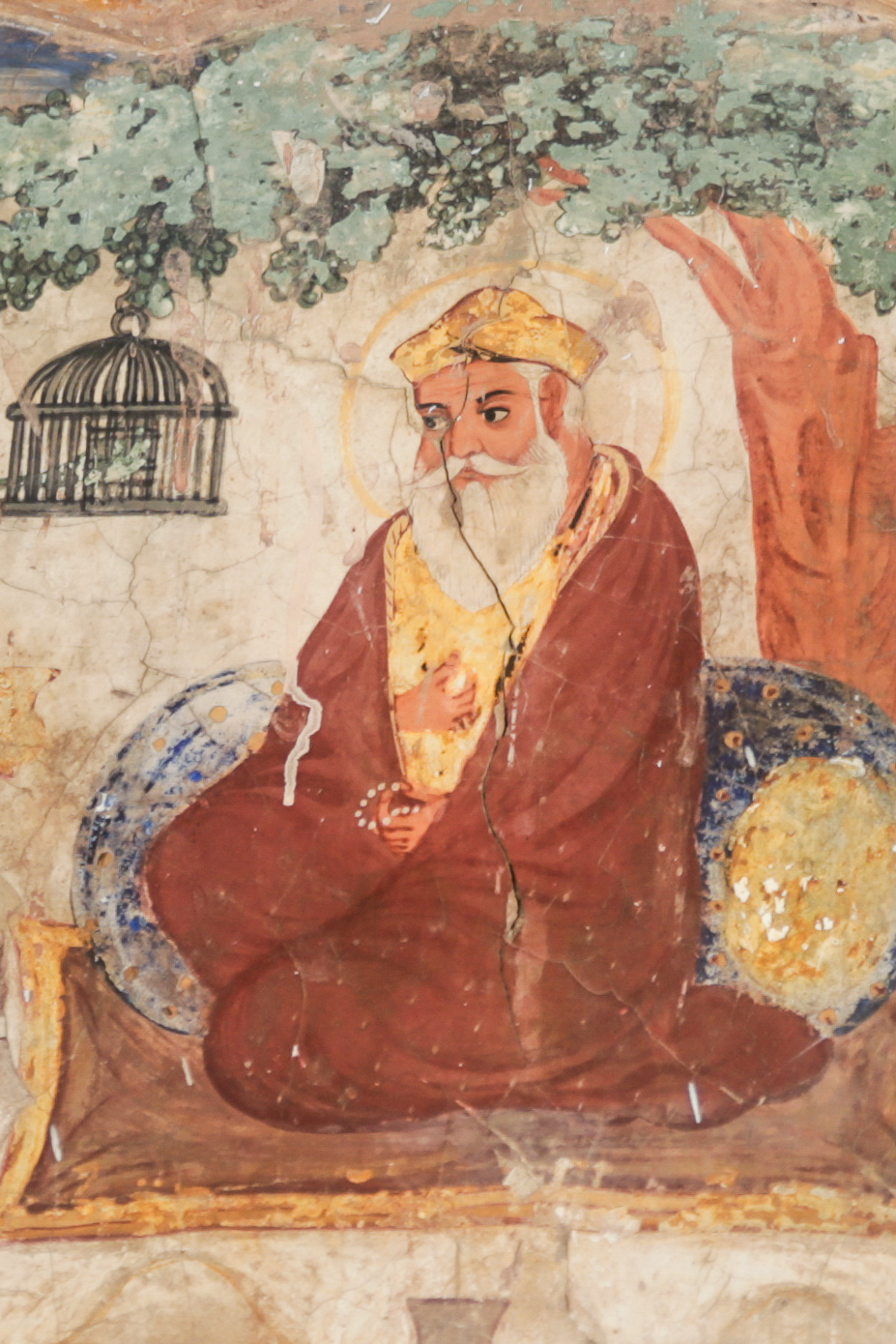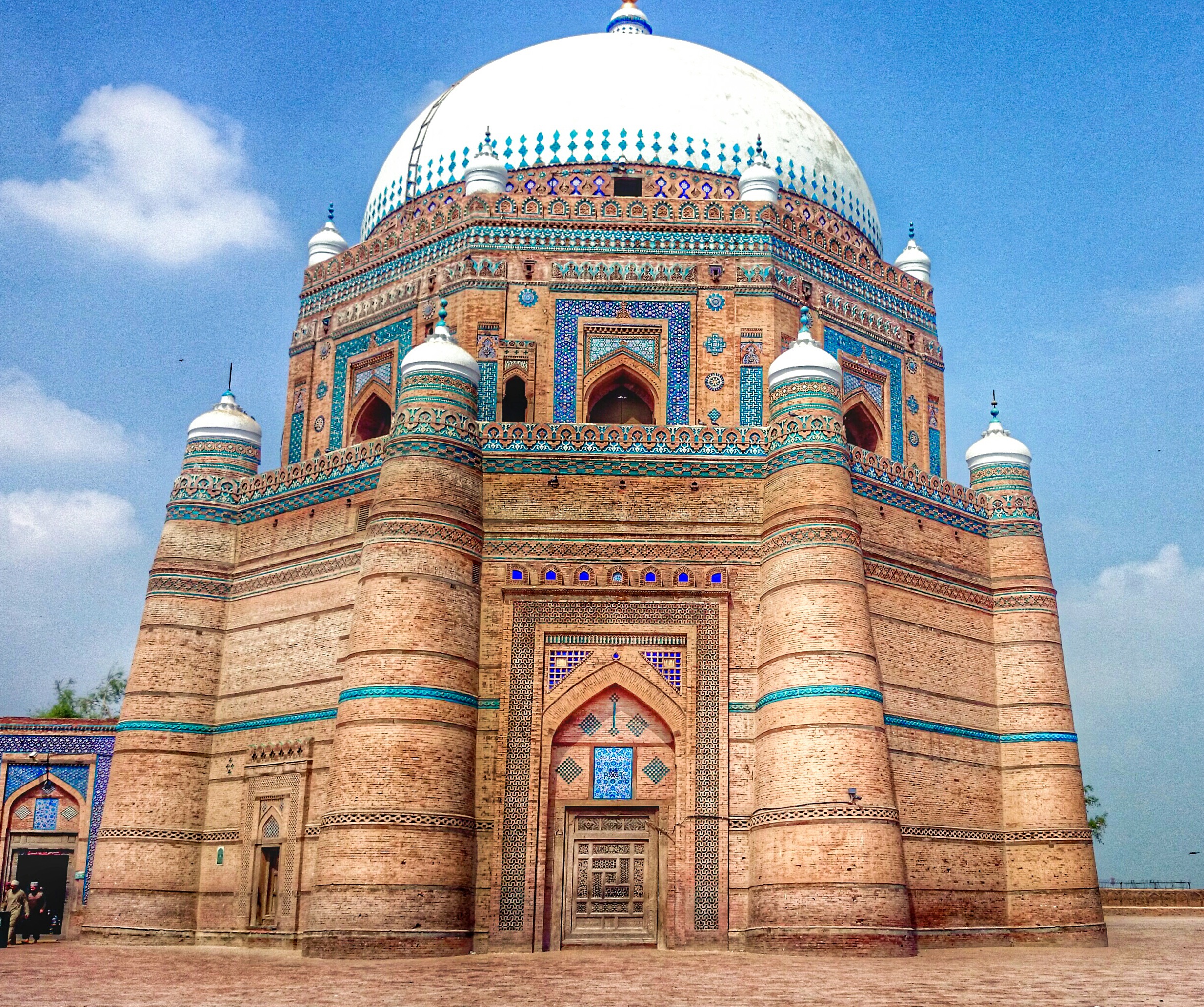|
Baba Ram Rai
Baba Ram Rai (Gurmukhi: ਰਾਮ ਰਾਏ; ''rāma rā'ē''; 1645–1687) was the eldest son of the seventh Sikh Guru, Guru Har Rai, and the founder of the Ramraiyas, an unorthodox sect in Sikhism. He founded the Guru Ram Rai Darbar Sahib, a Darbar in Dehradun which was built in Indo-Islamic architecture style. Ram Rai's brother, Guru Har Krishan Guru Har Krishan (Gurmukhi: ਗੁਰੂ ਹਰਿ ਕ੍ਰਿਸ਼ਨ, pronunciation: ; 7 July 1656 – 30 March 1664) was the eighth of the ten Sikh Gurus. At the age of five, he became the youngest Guru in Sikhism on 7 October 1661, ..., was the eighth of the ten Sikh Gurus. After his death, he was succeeded as head of the sect by mahant Aud Dass, who was helped by Ram Rai's widow, Panjab Kaur. References Bibliography * External links Guru Ram Rai Darbar Sahib - History Sikh warriors 1645 births 1687 deaths Punjabi people {{Sikhism-stub ... [...More Info...] [...Related Items...] OR: [Wikipedia] [Google] [Baidu] |
Sikhism
Sikhism (), also known as Sikhi ( pa, ਸਿੱਖੀ ', , from pa, ਸਿੱਖ, lit=disciple', 'seeker', or 'learner, translit=Sikh, label=none),''Sikhism'' (commonly known as ''Sikhī'') originated from the word ''Sikh'', which comes from the Sanskrit root ' meaning "disciple", or ' meaning "instruction". Singh, Khushwant. 2006. ''The Illustrated History of the Sikhs''. Oxford University Press. . p. 15.Kosh, Gur Shabad Ratnakar Mahan. https://web.archive.org/web/20050318143533/http://www.ik13.com/online_library.htm is an Indian religion that originated in the Punjab region of the Indian subcontinent,"Hinduism, Buddhism, Jainism and Sikh originated in India." around the end of the 15th century CE. It is the most recently founded major organized faith and stands at fifth-largest worldwide, with about 25–30 million adherents (known as Sikhs) .McLeod, William Hewat. 2019 998 Sikhism developed from the spiritual teachings of Guru Nanak (1469–1539), the faith's first gu ... [...More Info...] [...Related Items...] OR: [Wikipedia] [Google] [Baidu] |
Guru Ram Rai Darbar Sahib
Guru Ram Rai Darbar Sahib is a Sikh place of worship in Dehradun, India, dedicated to Baba Ram Rai, eldest son of Guru Har Rai, the seventh of the ten Sikh Gurus. Baba Ram Rai settled here with his followers in the mid-17th century, after he was banished by the Sikh orthodoxy for mistranslating scripture in front of the Mughal emperor Aurangzeb, so as to not cause offence. It is believed the city, Dehradun, gets its name from the religious camp established by him: a "dera", or camp, in the "doon" valley. The building is historically and architecturally significant, as it derives many of its architectural motifs, like minarets, domes and gardens, from Islamic architecture. While Sikh architecture, in general, drew inspiration from Mughal styles, the Darbar Sahib was unique in that it relied more heavily on elements that give it the appearance of a mosque than a conventional gurudwara. This was unusual in the 17th-18th centuries, as at the time Sikhs were generally in conflict ... [...More Info...] [...Related Items...] OR: [Wikipedia] [Google] [Baidu] |
Dehradun
Dehradun () is the capital and the most populous city of the Indian state of Uttarakhand. It is the administrative headquarters of the eponymous district and is governed by the Dehradun Municipal Corporation, with the Uttarakhand Legislative Assembly holding its winter sessions in the city as its winter capital. Part of the Garhwal region, and housing the headquarters of its Divisional Commissioner. Dehradun is one of the " Counter Magnets" of the National Capital Region (NCR) being developed as an alternative center of growth to help ease the migration and population explosion in the Delhi metropolitan area and to establish a smart city in the Himalayas. It is the third largest city in the Himalayas after Kathmandu and Srinagar. Dehradun is located in the Doon Valley on the foothills of the Himalayas nestled between Song river, a tributary of Ganga on the east and the Asan river, a tributary of Yamuna on the west. The city is noted for its picturesque landscape and slightly m ... [...More Info...] [...Related Items...] OR: [Wikipedia] [Google] [Baidu] |
India
India, officially the Republic of India (Hindi: ), is a country in South Asia. It is the seventh-largest country by area, the second-most populous country, and the most populous democracy in the world. Bounded by the Indian Ocean on the south, the Arabian Sea on the southwest, and the Bay of Bengal on the southeast, it shares land borders with Pakistan to the west; China, Nepal, and Bhutan to the north; and Bangladesh and Myanmar to the east. In the Indian Ocean, India is in the vicinity of Sri Lanka and the Maldives; its Andaman and Nicobar Islands share a maritime border with Thailand, Myanmar, and Indonesia. Modern humans arrived on the Indian subcontinent from Africa no later than 55,000 years ago., "Y-Chromosome and Mt-DNA data support the colonization of South Asia by modern humans originating in Africa. ... Coalescence dates for most non-European populations average to between 73–55 ka.", "Modern human beings—''Homo sapiens''—originated in Africa. Then, int ... [...More Info...] [...Related Items...] OR: [Wikipedia] [Google] [Baidu] |
Ramraiya
Ramraiyas (Gurmukhi: ਰਾਮਰਾਈਆ; ''rāmarā'ī'ā''), also referred to as ''Ram Raiyas'', are a Sikh sect that follow Baba Ram Rai, the excommunicated eldest son of Guru Har Rai (1630–61). Ram Rai was sent by his father as an emissary to the Mughal emperor Aurangzeb in Delhi. Aurangzeb objected to a verse in the Sikh scripture (''Asa ki Var'') that stated, "the clay from a Musalman's grave is kneaded into potter's lump", considering it an insult to Islam. Baba Ram Rai explained that the text was miscopied and modified it, substituting "Musalman" with "Beiman" (faithless, evil) which Aurangzeb approved.Ram Rai Encyclopedia of Sikhism, Editor in Chief: Harbans Singh, Punjab University The willingness to change a word led Guru Har Rai to bar his son from his presence, and ... [...More Info...] [...Related Items...] OR: [Wikipedia] [Google] [Baidu] |
Guru Har Rai
Guru Har Rai (Gurmukhi: ਗੁਰੂ ਹਰਿ ਰਾਇ, pronunciation: ; 16 January 1630 – 6 October 1661) revered as the ''seventh Nanak'', was the seventh of ten Gurus of the Sikh religion.Har Rai: Sikh Guru Encyclopedia Britannica (2015) He became the Sikh leader at age 14, on 3 March 1644, after the death of his grandfather and the sixth Sikh leader . He guided the Sikhs for about seventeen years, till his death at age 31. Guru Har Rai is notable for maintaining the large army of Sikh soldiers that the sixth Sikh Guru had amassed, yet avoiding military conflict. He supported the moderate Suf ... [...More Info...] [...Related Items...] OR: [Wikipedia] [Google] [Baidu] |
Guru Har Krishan
Guru Har Krishan (Gurmukhi: ਗੁਰੂ ਹਰਿ ਕ੍ਰਿਸ਼ਨ, pronunciation: ; 7 July 1656 – 30 March 1664) was the eighth of the ten Sikh Gurus. At the age of five, he became the youngest Guru in Sikhism on 7 October 1661, succeeding his father, Guru Har Rai. He contracted smallpox in 1664 and died before reaching his eighth birthday. It is said that he died because he contracted smallpox while successfully curing his followers. He is also known as Bal Guru (Child Guru),HS Singha (2009), The Encyclopedia of Sikhism, Hemkunt Press, , pages 96–97 and sometimes spelled in Sikh literature as Hari Krishan Sahib. He is remembered in the Sikh tradition for saying "Baba Bakale" before he died, which Sikhs interpreted to identify his granduncle Guru Tegh Bahadur as the next successor. Guru Har Krishan had the shortest reign as Guru, lasting only two years, five months and 24 days. Biography Har Krishan was born in Kiratpur (Shivalik Hills) in northwest Indian subc ... [...More Info...] [...Related Items...] OR: [Wikipedia] [Google] [Baidu] |
Gurmukhi
Gurmukhī ( pa, ਗੁਰਮੁਖੀ, , Shahmukhi: ) is an abugida developed from the Laṇḍā scripts, standardized and used by the second Sikh guru, Guru Angad (1504–1552). It is used by Punjabi Sikhs to write the language, commonly regarded as a Sikh script, Gurmukhi is used in Punjab, India as the official script of the Punjabi language. While Shahmukhi script is used in Punjab, Pakistan as the official script. The primary scripture of Sikhism, the Guru Granth Sahib, is written in Gurmukhī, in various dialects and languages often subsumed under the generic title ''Sant Bhasha'' or ''saint language'', in addition to other languages like Persian and various phases of Indo-Aryan languages. Modern Gurmukhī has thirty-five original letters, hence its common alternative term ''paintī'' or "the thirty-five," plus six additional consonants, nine vowel diacritics, two diacritics for nasal sounds, one diacritic that geminates consonants and three subscript characters. Hi ... [...More Info...] [...Related Items...] OR: [Wikipedia] [Google] [Baidu] |
Sikh Gurus
The Sikh gurus ( Punjabi: ਸਿੱਖ ਗੁਰੂ) are the spiritual masters of Sikhism, who established this religion over the course of about two and a half centuries, beginning in 1469. The year 1469 marks the birth of Guru Nanak, the founder of Sikhism. He was succeeded by nine other human gurus until, in 1708, the '' Guruship'' was finally passed on by the tenth guru to the holy Sikh scripture, Guru Granth Sahib, which is now considered the living Guru by the followers of the Sikh faith. Etymology and definition ''Guru'' (, ; sa, गुरु, Punjabi: ਗੁਰੂ, IAST: ''guru'') is a Sanskrit term for a "teacher, guide, expert, or master" of certain knowledge or field. Bhai Vir Singh, in his dictionary of Guru Granth Sahib describes the term Guru as a combination of two separate units: "Gu;(ਗੁ)" meaning darkness and "Rū;(ਰੂ)" which means light. Hence, Guru is who brings light into darkness or in other words, the one who enlightens. Bhai Vir Singh's defin ... [...More Info...] [...Related Items...] OR: [Wikipedia] [Google] [Baidu] |
Ramraiyas
Ramraiyas (Gurmukhi: ਰਾਮਰਾਈਆ; ''rāmarā'ī'ā''), also referred to as ''Ram Raiyas'', are a Sikh sect that follow Baba Ram Rai, the excommunicated eldest son of Guru Har Rai (1630–61). Ram Rai was sent by his father as an emissary to the Mughal emperor Aurangzeb in Delhi. Aurangzeb objected to a verse in the Sikh scripture (''Asa ki Var'') that stated, "the clay from a Musalman's grave is kneaded into potter's lump", considering it an insult to Islam. Baba Ram Rai explained that the text was miscopied and modified it, substituting "Musalman" with "Beiman" (faithless, evil) which Aurangzeb approved.Ram Rai Encyclopedia of Sikhism, Editor in Chief: Harbans Singh, Punjab University The willingness to change a word led Guru Har Rai to bar his son from his presence, and ... [...More Info...] [...Related Items...] OR: [Wikipedia] [Google] [Baidu] |
Indo-Islamic Architecture
Indo-Islamic architecture is the architecture of the Indian subcontinent produced by and for Islamic patrons and purposes. Despite an initial Arab presence in Sindh, the development of Indo-Islamic architecture began in earnest with the establishment of Delhi as the capital of the Ghurid dynasty in 1193. Succeeding the Ghurids was the Delhi Sultanate, a series of Central Asian dynasties that consolidated much of North India, and later the Mughal Empire by the 15th century. Both of these dynasties introduced Persianate architecture and art styles from Western Eurasia into the Indian subcontinent. The types and forms of large buildings required by Muslim elites, with mosques and tombs much the most common, were very different from those previously built in India. The exteriors of both were very often topped by large domes, and made extensive use of arches. Both of these features were hardly used in Hindu temple architecture and other indigenous Indian styles. Both types of ... [...More Info...] [...Related Items...] OR: [Wikipedia] [Google] [Baidu] |
Sikh Warriors
Sikhs ( or ; pa, ਸਿੱਖ, ' ) are people who adhere to Sikhism (Sikhi), a monotheistic religion that originated in the late 15th century in the Punjab region of the Indian subcontinent, based on the revelation of Guru Nanak. The term ''Sikh'' has its origin in the word ' (), meaning 'disciple' or 'student'. Male Sikhs generally have ''Singh'' ('lion'/'tiger') as their last name, though not all Singhs are necessarily Sikhs; likewise, female Sikhs have ''Kaur'' ('princess') as their last name. These unique last names were given by the Gurus to allow Sikhs to stand out and also as an act of defiance to India's caste system, which the Gurus were always against. Sikhs strongly believe in the idea of "Sarbat Da Bhala" - "Welfare of all" and are often seen on the frontline to provide humanitarian aid across the world. Sikhs who have undergone the ''Amrit Sanchar'' ('baptism by Khanda'), an initiation ceremony, are from the day of their initiation known as Khalsa, and they mu ... [...More Info...] [...Related Items...] OR: [Wikipedia] [Google] [Baidu] |







